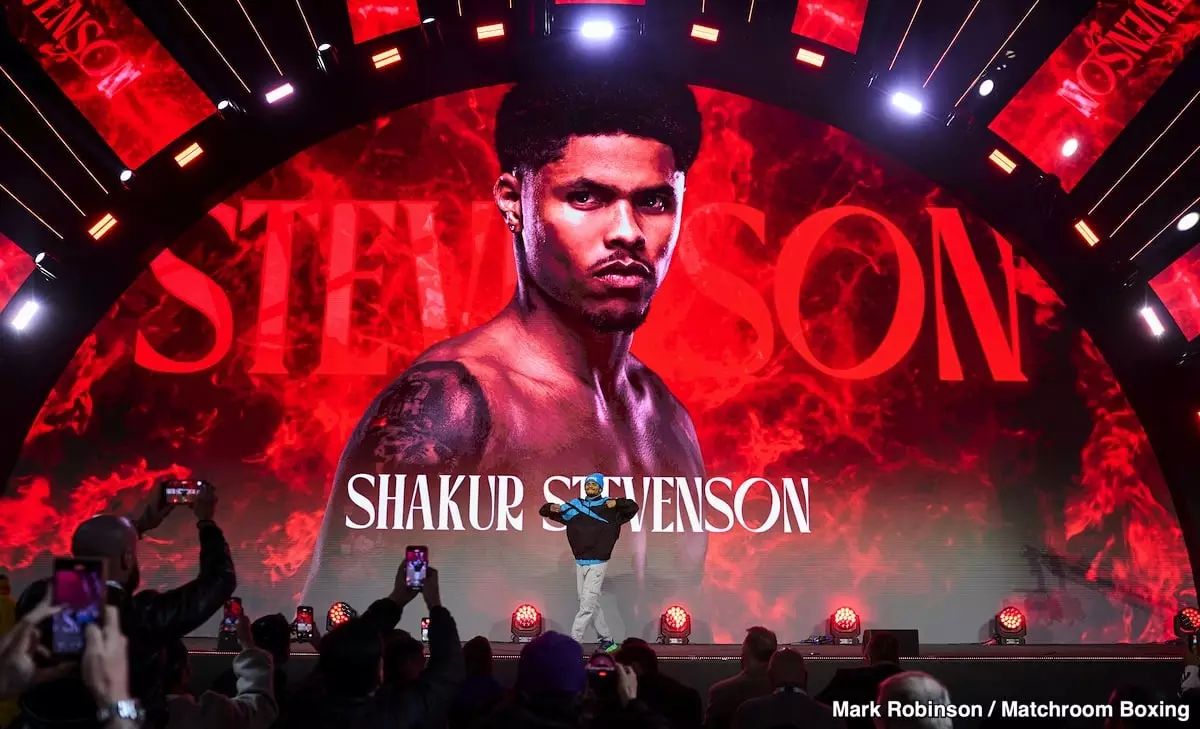In the evolving world of combat sports, the perception of what constitutes engaging boxing has shifted dramatically. Tim Bradley, a seasoned analyst and former champion, argues that contemporary audiences, particularly younger fans, are drawn to the thrill of knockouts, a stark contrast to the tactical finesse exhibited by certain fighters like Shakur Stevenson. This bifurcation in appreciation highlights an intriguing paradox within the sport: the deep-rooted traditions of boxing against the backdrop of a rapidly digitized culture that demands instant gratification. As spectators, our entertainment choices are increasingly curated by algorithms and social media snippets, and this influences how we consume sports, particularly boxing.
The Allure of the Knockout
Bradley’s criticism raises a valid point: the modern viewership, conditioned by the instant success pace of MMA and the relentless barrage of content provided by platforms like Twitter and Instagram, is less patient with the nuanced strategy of boxing. Stevenson, celebrated for his technical prowess and ring IQ, finds himself at odds with an audience that craves fast-paced, explosive spectacles. The appetite for sanguine bouts, filled with exchanges and highlight-reels, relegates a fighter like Stevenson to the background. With fights no longer purely about skill but also about spectacle, the consequences for boxers who embody the “hit-and-not-get-hit” philosophy can be significant, often resulting in a fan base that is either apathetic or actively disengaged.
The Rise of Engagement Over Technique
Boxing has evolved over the last decade not just in terms of technique, but in how fighters are marketed and perceived. Networks aim for ratings, driving a demand for fighters who can deliver riveting performances, sometimes at the expense of showcasing technical mastery. Stevenson’s hit-and-run style, while effective, often leads to what Bradley terms a “boring” viewing experience. This prompts promoters to favor matchups conjured with crowd-pleasing fighters instead, pushing Stevenson’s name away from major cards. The reality is that Stevenson, despite his mastery, struggles to ignite passion in an audience conditioned to expect adrenaline-pumping moments each round.
The Disconnect Between Skill and Popularity
The crux of the issue revolves around the disconnect between a fighter’s skill set and their mass appeal. Fans today often overlook the subtleties of boxing’s ‘sweet science,’ largely due to a lack of understanding and a preference for action over strategy. Stevenson’s meticulous approach, which minimizes risk by avoiding unnecessary engagements, stands in stark contrast to knockout-dependent fighters who elicit roars from the audience. As Bradley outlines, the culture has morphed into one that prioritizes rapid-fire action over the cerebral complexities of boxing. This phenomenon echoes broader cultural themes wherein depth of understanding is often sacrificed for immediate satisfaction.
The Role of Social Media in Fan Engagement
Furthermore, social media dynamics exacerbate this trend. The digital age has prompted fans to rely on bite-sized highlights rather than full fights, leading to a preference for immediate climactic moments. Despite Stevenson’s substantial online presence, his charisma cannot eclipse the unfaltering demand for spectacle in the ring. Fans who tune in with expectations driven by platforms like TikTok and Instagram are less inclined to appreciate the subtleties of defensive boxing techniques that prioritize safety over engaging in thrilling exchanges. In an environment craving constant entertainment, how do fighters like Stevenson survive, let alone thrive?
Navigating the Future of Boxing
Looking ahead, the boxing world faces a significant challenge: how to reconcile the art of boxing with the harsh demands of modern entertainment culture. While fan preferences have undeniably shifted, there remains a potential for education and appreciation of the sport’s technical aspects. Promoters and fighters alike need to navigate these turbulent waters carefully, possibly bridging the gap by creating environments where skillful boxers are both celebrated and adequately showcased without succumbing to the pressure for dramatic flourishes.
As the sport of boxing continues to confront these challenges, the question persists: can a balance be achieved that honors the tradition of the sport while catering to the contemporary audience’s desire for action? The outcome of this quest will shape the future of boxing, determining whether fighters like Shakur Stevenson can emerge from the shadows of their so-called “boring” styles and find a place in an ever-evolving cultural arena.

